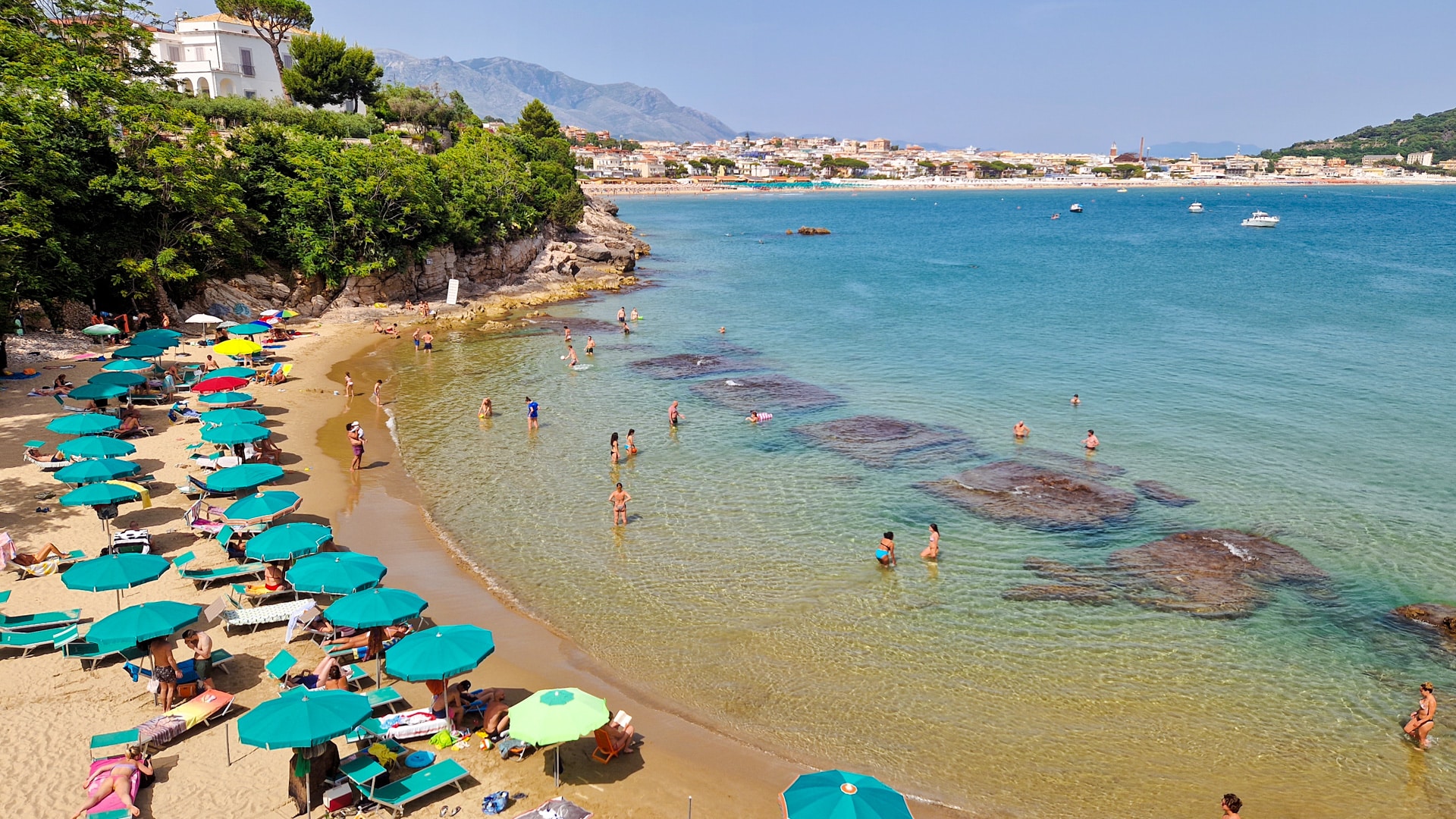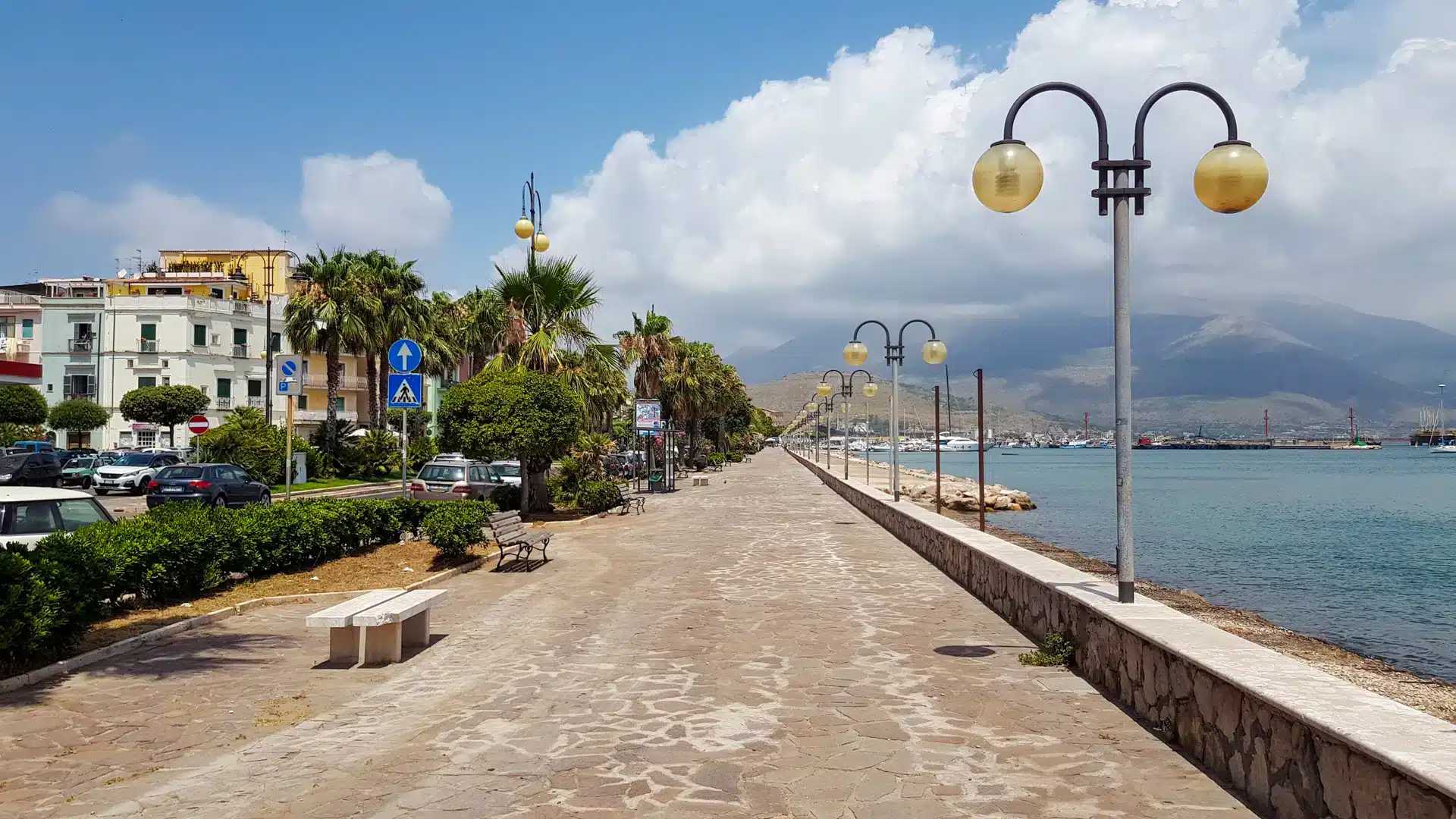Fontania Beach – A Secluded Gem at Gaeta
Fontania Beach at Gaeta is a charming, intimate cove surrounded by rocky cliffs. The beach takes its name from the ancient Roman villa, Villa di Gneo Fonteo, whose ruins still grace the shore. Today, you can spot the remains of this historic site, including arches, fragments of walls, and the foundations of a colonnade. These can be admired either by wading into the shallow water or from above, where the hillside offers a panoramic view of the ruins and the sea.
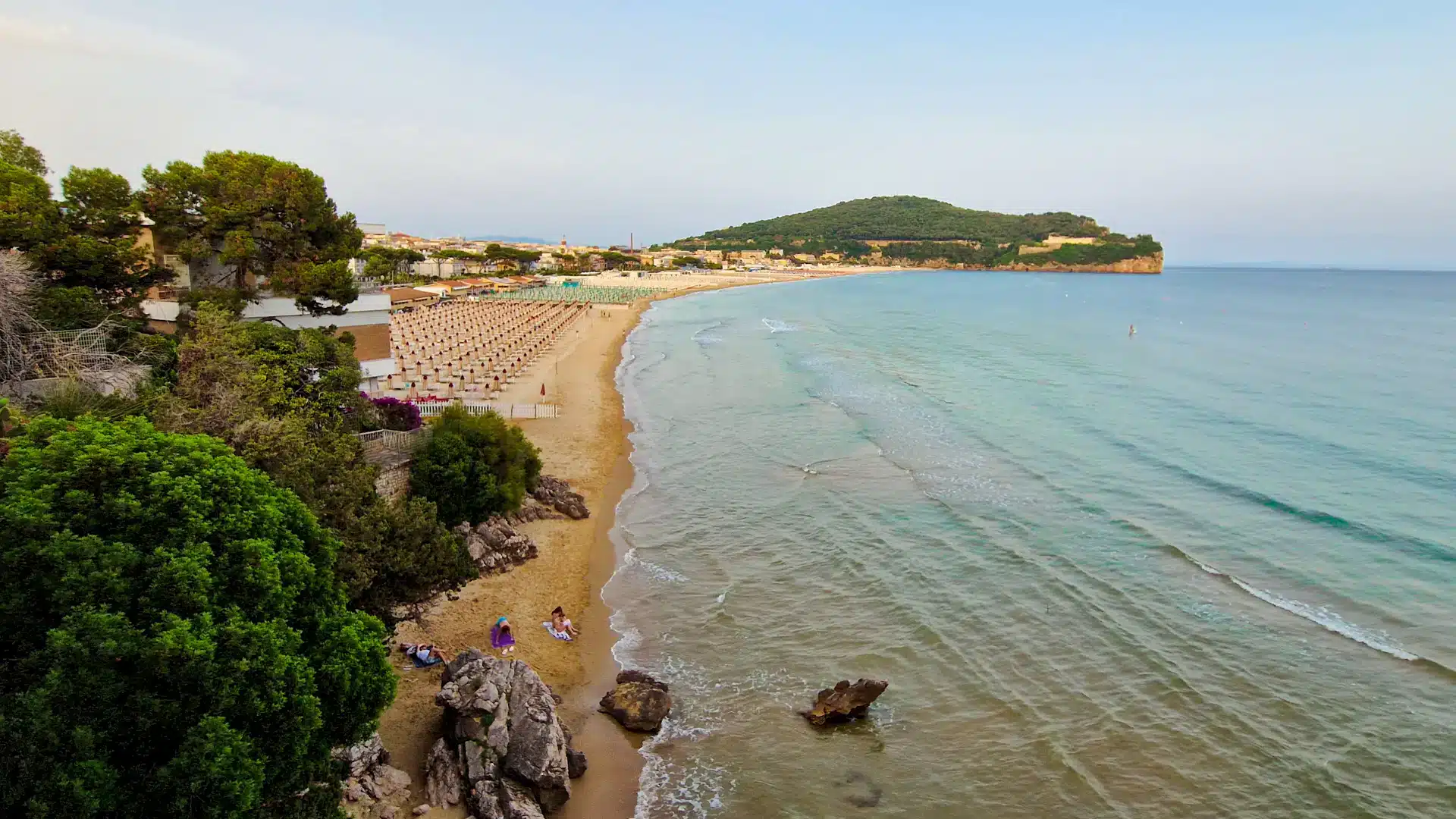
During our vacation, Fontania Beach became a favorite spot for us, as we rented an apartment in a villa perched on the headland near the beach. From the apartment, it was a delightfully short walk to the beach – perfect for slipping into a bikini and sandals after morning coffee and heading straight to the shoreline.
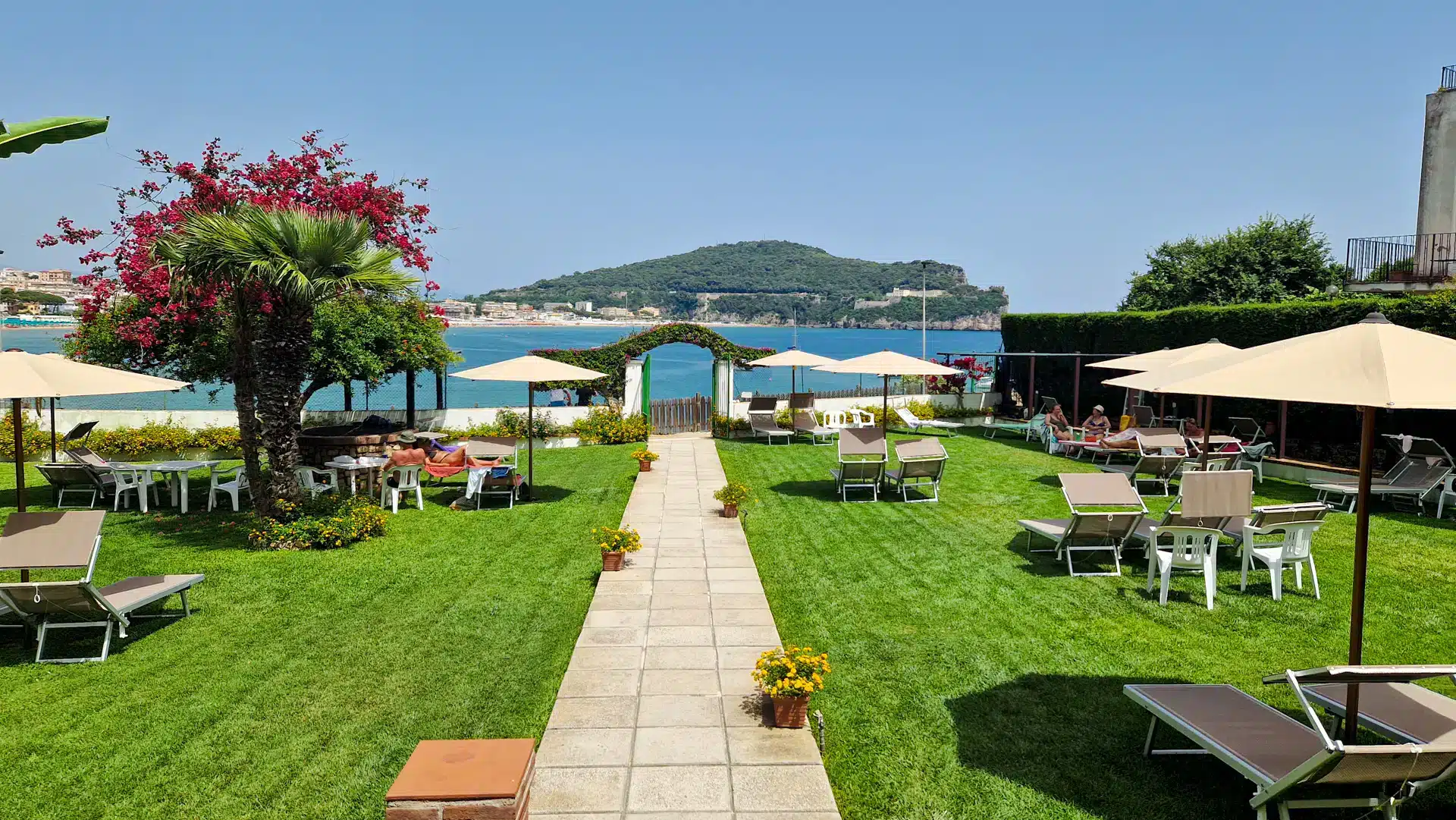
I made it a point to arrive early to secure a front-row spot with an uninterrupted view of the sea. While such prime spots are limited, especially on a small beach like Fontania, arriving before 10 a.m. in June usually does the trick. I descended the staircase leading to the beach, paid for a sunbed and umbrella from the staff, and settled into my chosen spot to enjoy a relaxing day by the sea.
Fontania Beach is refreshingly simple – the only service available on the sand is the rental of sunbeds and umbrellas. However, perched above the beach on the hillside is a cozy balneare, complete with a lush garden and stunning views of the sea and Monte Orlando. When the midday sun became too intense, I retreated to the bar there for a cold beer and later enjoyed a light lunch in its breezy, shaded seating area.
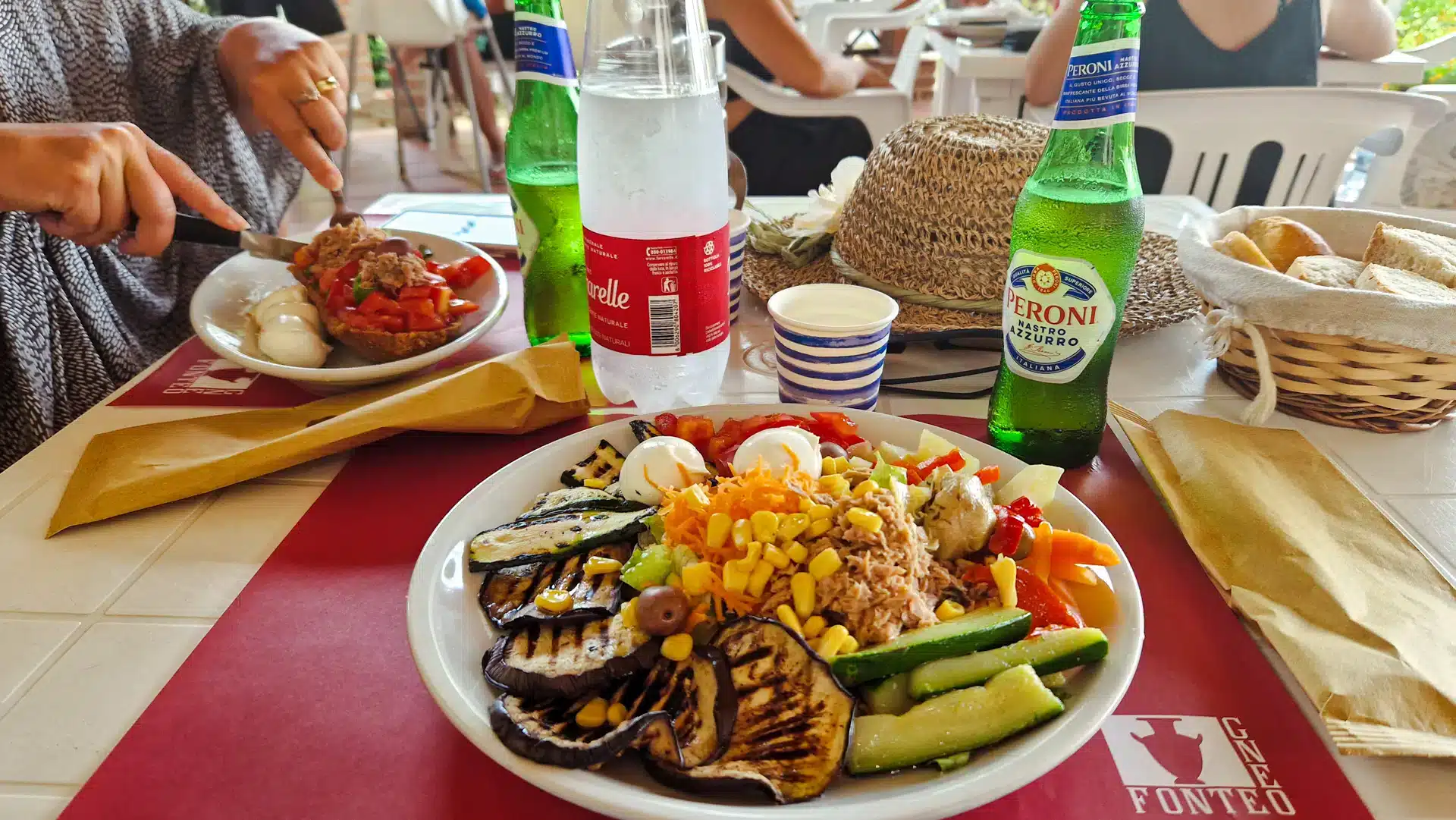
The atmosphere at the beach shifted gently throughout the day. In the morning, the crowd was mostly made up of sun-kissed retirees, each equipped with their picnic lunches, quietly enjoying the tranquility. By the afternoon, locals began to arrive – young people looking for a relaxing spot and families with children eager to play by the water. I noticed very few tourists, which only added to the serene and authentic vibe of the beach.
Swimming at Fontania Beach was a particular highlight. I shared the clear waters with schools of tiny fish, darting around the underwater ruins, creating a magical connection to the site’s ancient past. Meanwhile, sailboats swayed gently on the horizon, completing the picturesque scene.
Fontania Beach offers an idyllic escape for those seeking a peaceful seaside retreat steeped in natural beauty and history. Whether you're exploring the ruins, soaking up the sun, or simply gazing at the glistening water, this hidden gem provides a truly memorable experience.
